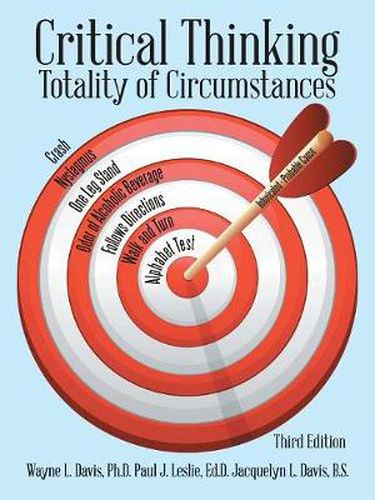Readings Newsletter
Become a Readings Member to make your shopping experience even easier.
Sign in or sign up for free!
You’re not far away from qualifying for FREE standard shipping within Australia
You’ve qualified for FREE standard shipping within Australia
The cart is loading…






This title is printed to order. This book may have been self-published. If so, we cannot guarantee the quality of the content. In the main most books will have gone through the editing process however some may not. We therefore suggest that you be aware of this before ordering this book. If in doubt check either the author or publisher’s details as we are unable to accept any returns unless they are faulty. Please contact us if you have any questions.
This book provides an overview of effectively understanding information. One goal of this book is for law enforcers to understand the legality of their actions via math, grammar, and logic. This book applies math and English to the law so that police officers may effectively articulate their actions in court. For example, specific laws and police actions can be evaluated via truth tables and Venn Diagrams. Some of the factors that can influence the value of information include assumptions, limitations, different lenses of truth, different ethical systems, different police department orientations, and the format in which the data are presented. For example, a suspect may attempt to mislead an officer by using existential and universal quantifiers and by using the converse of conditional statements. Another goal of this book is to apply basic math skills to common law enforcement scenarios. For example, the methods of determining angles, distances, and speeds are presented.
$9.00 standard shipping within Australia
FREE standard shipping within Australia for orders over $100.00
Express & International shipping calculated at checkout
This title is printed to order. This book may have been self-published. If so, we cannot guarantee the quality of the content. In the main most books will have gone through the editing process however some may not. We therefore suggest that you be aware of this before ordering this book. If in doubt check either the author or publisher’s details as we are unable to accept any returns unless they are faulty. Please contact us if you have any questions.
This book provides an overview of effectively understanding information. One goal of this book is for law enforcers to understand the legality of their actions via math, grammar, and logic. This book applies math and English to the law so that police officers may effectively articulate their actions in court. For example, specific laws and police actions can be evaluated via truth tables and Venn Diagrams. Some of the factors that can influence the value of information include assumptions, limitations, different lenses of truth, different ethical systems, different police department orientations, and the format in which the data are presented. For example, a suspect may attempt to mislead an officer by using existential and universal quantifiers and by using the converse of conditional statements. Another goal of this book is to apply basic math skills to common law enforcement scenarios. For example, the methods of determining angles, distances, and speeds are presented.